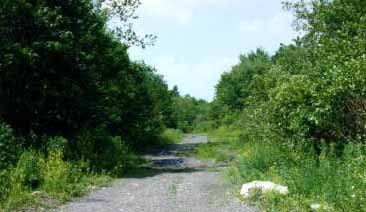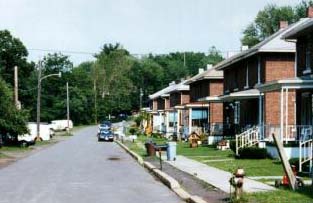周辺および計画地概要
 ごめんなさい、日本語版は現在工事中です。
ごめんなさい、日本語版は現在工事中です。
 ごめんなさい、日本語版は現在工事中です。
ごめんなさい、日本語版は現在工事中です。
 The Wyoming Valley's powerful landscapes are wrought with contrasts. Juxtaposed with the lush green hills and ridges of the Penobscot Mountains are mounds upon mounds of black coal. These are silent testimonials to the burial of a thriving industrial past. Through the center of the Valley runs the Susquehanna River, a resource that is both prized and feared. Rising above each of the Valley's strong ethnic neighborhoods are church steeples, the symbolic centers of each community.
The Wyoming Valley's powerful landscapes are wrought with contrasts. Juxtaposed with the lush green hills and ridges of the Penobscot Mountains are mounds upon mounds of black coal. These are silent testimonials to the burial of a thriving industrial past. Through the center of the Valley runs the Susquehanna River, a resource that is both prized and feared. Rising above each of the Valley's strong ethnic neighborhoods are church steeples, the symbolic centers of each community. While initially a farming region, the Valley's economy expanded in the mid 1800s as a result of the anthracite coal mining industry which controlled thousands of acres above and below ground. Despite the ridges that physically walled the valley off from the outside, this Valley was a critical economic player outside those boundaries. The magnitude of the anthracite coal industry and its associated technologies helped to play a critical role in the industrial history of the United States.
While initially a farming region, the Valley's economy expanded in the mid 1800s as a result of the anthracite coal mining industry which controlled thousands of acres above and below ground. Despite the ridges that physically walled the valley off from the outside, this Valley was a critical economic player outside those boundaries. The magnitude of the anthracite coal industry and its associated technologies helped to play a critical role in the industrial history of the United States. The deep mining industry experienced a downfall beginning in the late 1950s which ultimately led to the bankruptcy of one of the area's largest coal concerns, the Blue Coal Company in the late 1970s. In 1954 the Susquehanna River broke through a mine wall and flooded the entire underground network of coal mines with river water, clinching the industry's decline. Since then the Wyoming Valley has seen little growth, and consequently the area suffers from an identity problem rooted in the downturn of the local economy coupled with the desire by some to bury the mining past with its hardship and oppression.
The deep mining industry experienced a downfall beginning in the late 1950s which ultimately led to the bankruptcy of one of the area's largest coal concerns, the Blue Coal Company in the late 1970s. In 1954 the Susquehanna River broke through a mine wall and flooded the entire underground network of coal mines with river water, clinching the industry's decline. Since then the Wyoming Valley has seen little growth, and consequently the area suffers from an identity problem rooted in the downturn of the local economy coupled with the desire by some to bury the mining past with its hardship and oppression.
 メールはこちらへ
メールはこちらへ
住民参加の現場よりに戻る

このページは![]() の提供です。
の提供です。
無料のページがもらえます。